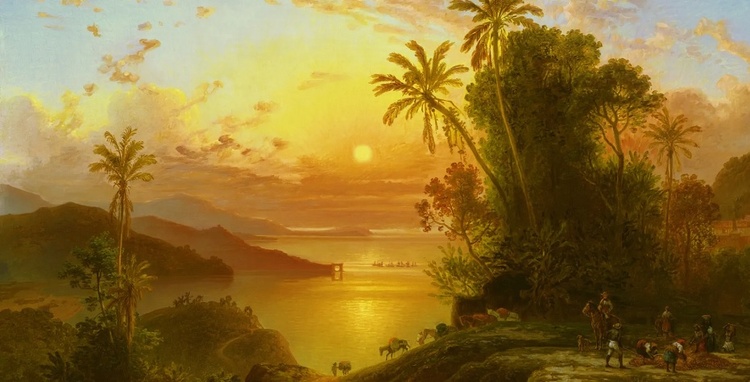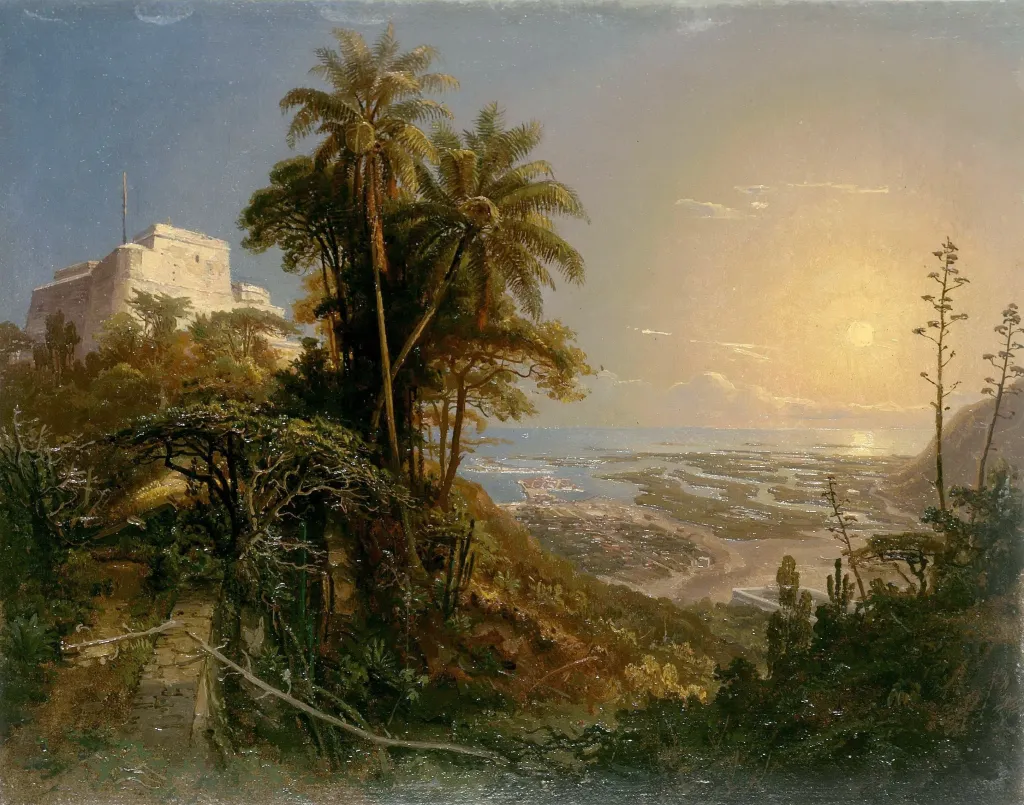
The German painter who captured the soul of the Venezuelan landscape
His legacy remains as an artistic and scientific window to the Latin American tropics.
Ferdinand Bellermann (1814-1889) was a German artist who found an inexhaustible source of inspiration in Venezuela. Considered one of the most prominent traveling painters of the 19th century, Bellermann traveled the country for more than three years, motivated by the fascination of the naturalist Alexander von Humboldt. Unlike other European artists of his time, Bellermann did not focus his attention on the human figure, but rather on the vast and imposing tropical landscape, which he depicted with a blend of scientific wonder and romantic sensibility.
During his stay, he made more than 230 sketches and field studies, now preserved in the Kupferstichkabinett in Berlin. Bellermann meticulously documented both the lush vegetation and urban and rural life, following an itinerary suggested by Humboldt. His work is characterized by compositions in which nature completely dominates the environment, relegating human presence to a secondary role. The artist viewed the landscape as a dramatic backdrop, reflecting the struggle between civilization and nature.
Bellermann was trained by key figures in German art, such as Johann Heinrich Meyer and Karl Blechen, which gave him a solid technical foundation and an aesthetic vision influenced by Romanticism and early Impressionism. Upon his return to Europe, Venezuela remained deeply embedded in his memory and work. One of his most recognized paintings, Costa de La Guaira al atardecer (Coast of La Guaira at Sunset), was appraised at nearly one million dollars in 2013. His legacy remains as an artistic and scientific window into the Latin American tropics.
Source

- December 14, 2025
Brazilian Artist's Exhibitions at the Vatican

- December 14, 2025
Visual Art in Chile: Memory, Critique, and Experimentation

- December 14, 2025
Visual Art in Bolivia: Ancestry, Resistance, and Identity

- December 14, 2025
Trump's racism

- December 14, 2025
Leopoldo Anjo - Brazil

- December 14, 2025
After Photography by Fred Ritchin

- December 13, 2025
Visual Art in Peru: Ancestral Tradition and Contemporary Creation

- December 13, 2025
Visual Art in Argentina: Identity, Memory, and Experimentation

- December 13, 2025
Art for Gaza

- December 14, 2025
Visual Art in Chile: Memory, Critique, …

- December 14, 2025
Visual Art in Bolivia: Ancestry, Resist…

- December 13, 2025
Visual Art in Peru: Ancestral Tradition…

- December 13, 2025
Visual Art in Argentina: Identity, Memo…

- December 11, 2025
The Visual Arts in Mexico: Between Myth…

- December 11, 2025
Visual Arts in Argentina: A River of Id…

- December 10, 2025
The Power of Graffiti in Mexico: Identi…

- December 10, 2025
Pioneering Women of Latin American Art:…

- December 09, 2025
Mexican Muralism and Its Continental Im…

- December 08, 2025
Indigenous and Afro-descendant Art in t…

- December 08, 2025
Current Trends in Latin American Art at…

- December 07, 2025
The Role of Conceptual Art in Brazil, C…

- December 06, 2025
New Media: Video Art and Digital Art in…

- December 04, 2025
NFTs and Emerging Latin American Artists

- December 03, 2025
Reinterpreting the Work of Fernando Bot…

- December 03, 2025
Alejandro Obregón and the Consolidation…

- December 02, 2025
Hélio Oiticica and the Legacy of Brazil…

- December 02, 2025
The Relevance of Tarsila do Amaral in B…

- December 01, 2025
How Art Auctions Work in Latin America

- December 01, 2025
The Growth of Young Collectors in the R…

- August 29, 2023
The history of Bolivian art

- February 19, 2024
Analysis and meaning of Van Gogh's Star…

- January 28, 2024
Culture and Art in Argentina

- September 25, 2023
What is the importance of art in human …

- September 23, 2023
What is paint?

- August 23, 2023
The 11 types of art and their meanings

- August 10, 2023
14 questions and answers about the art …

- September 23, 2023
Painting characteristics

- August 30, 2023
First artistic manifestations

- January 12, 2024
10 most beautiful statues and sculpture…

- September 23, 2023
History of painting

- March 26, 2024
The importance of technology in art1

- July 13, 2024
The impact of artificial intelligence o…

- March 26, 2024
Cultural identity and its impact on art…

- April 02, 2024
History visual arts in Brazil

- August 16, 2023
The 15 greatest painters in art history

- April 06, 2024
History of visual arts in Ecuador

- October 18, 2023
History of sculpture

- November 21, 2024
The Role of Visual Arts in Society

- August 24, 2023
The most famous image of Ernesto "Che" …

- February 19, 2024
Analysis and meaning of Van Gogh's Star…

- August 13, 2023
9 Latino painters and their great contr…

- August 23, 2023
The 11 types of art and their meanings

- August 10, 2023
14 questions and answers about the art …

- August 27, 2023
15 main works of Van Gogh

- August 29, 2023
The history of Bolivian art

- January 28, 2024
Culture and Art in Argentina

- November 06, 2023
5 Latin American artists and their works

- September 23, 2023
Painting characteristics

- September 23, 2023
What is paint?

- September 25, 2023
What is the importance of art in human …

- March 26, 2024
Cultural identity and its impact on art…

- August 30, 2023
First artistic manifestations

- December 18, 2023
10 iconic works by Oscar Niemeyer, geni…

- January 20, 2024
What is the relationship between art an…

- January 12, 2024
10 most beautiful statues and sculpture…

- August 24, 2023
The most famous image of Ernesto "Che" …

- October 30, 2023
Characteristics of Contemporary Art

- May 26, 2024
Técnicas de artes visuais

- August 22, 2023


